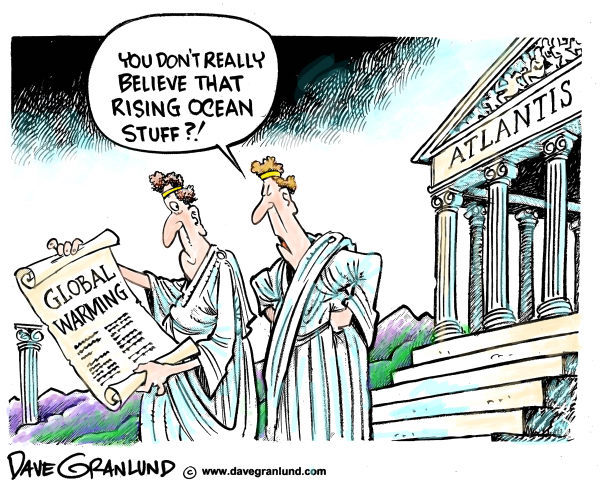
Presidents George W. Bush and Barack Obama — administrations we worked for — shared a set of common, bipartisan goals for addressing the world’s climate change challenges: a rigorous, science-based approach, an appreciation for the powerful role of globally interdependent markets, and an understanding of how leadership in clean energy innovation helps advance U.S. interests at home and around the globe.
Our commitment to these goals translated into actions: support for energy and environmental policies to strengthen security and reduce pollution, particularly greenhouse gas emissions (GHG); increased investments in shared prosperity of energy innovation; and agile adaptation of technology, policy and markets to help accelerate the clean energy transition.
Fast forward to 2018. The Trump administration has taken several steps that would slow the steady progress we have made in reducing CO2 and other GHG emissions. This backsliding includes withdrawing from the Paris Climate Accord, unsupported federal interventions in utility markets to prop up uncompetitive aging coal plants, removing future constraints on power plant emissions, and an effort to roll back auto fuel efficiency standards to levels behind those in many emerging economies.
Then there is California — shining light on its outsized role in addressing climate change and energy security. California represents the fifth largest economy in the world — its innovations, policies, and markets have enormous influence, especially when it brings together business, labor, community, environmental, and technology interests that look for a fair and equitable deal for all constituents.
Success in meeting the 2-degree-Celsius goal established in the Paris Accord requires significant emission reductions from all sectors — electricity, transportation, buildings and industry. California’s continued leadership in the transportation sector by protecting vehicle emissions and efficiency standards already on the books is essential, replicable, and scalable.
However, electricity is the sector that has the greatest potential for early deep decarbonization, and California’s actions here are also transformative. That is why the current legislative deliberations in California on SB100, a bill that would aspire to the deepest electricity emissions reductions legislated thus far, are so consequential.
California already has a renewable portfolio standard (RPS) that requires power companies to generate 50 percent of their electricity from renewable sources by 2030, a goal that will likely be met 10 years ahead of schedule. Building on this success, SB100 would increase the percentage of renewable generation to 60 percent and importantly establish a goal of 100 percent zero-emissions electricity by 2045, which should be a technology neutral “clean energy standard” that would build on the robust RPS and facilitate meeting stringent economy-wide targets.
We should not limit our options or capabilities for achieving deep decarbonization — it is the timely outcome that matters more than the technology mix to achieve it.
A technology neutral clean energy standard (CES) supports a wider range of options for reliably cutting carbon emissions steepest and cheapest. An effective CES should be system-wide zero net power sector emissions, encouraging more flexibility and innovation than mandating zero emissions from each source independently. This allows, for example, for optimizing the roles of efficiency, biosphere carbon sequestration, natural gas with carbon capture and sequestration, and market design (including appropriate credits) to make significant contributions. Maximum flexibility to take advantage of technology advances across the board will lead to the strongest portfolio of affordable solutions, not just in California but in other regions as well, and California’s success is certainly linked to regional solutions.
Meeting our climate goals and accelerating the clean energy transition will, however, require advances over time in our understanding of new technologies and the interactions between policies, public attitudes, and technologies. We will need to understand better and then address issues such as the reliability, resilience, and security of electricity distribution systems, long-term storage to accommodate variable renewables, land use challenges associated with very large deployments of utility scale wind and solar generation, and the imperative of equitably providing affordable clean electricity for all consumers, not just those who can afford solar panels on their rooftops.
Massachusetts and California, our home states, demonstrate the value of bipartisanship, and leadership by example. We are proud of their commitments to ensuring that America’s future is clean, green, secure, equitable, healthy, and prosperous. These are the benefits of an inevitable clean energy future, accelerated affordably with ambitious policy proposals like SB 100 with a CES. In the absence of federal leadership, sensible legislation is again needed from America’s statehouses to catalyze national and global action. Such legislation together with continuing strong investments in clean energy innovation will take us to the goal sooner rather than later.
Governor Brown will soon host the Global Climate Action Summit, and California legislative action in the runup can capitalize on an extraordinary opportunity for national and global leadership. Setting ambitious, but achievable, stretch goals that can be flexibly met and spur innovation and prosperity is part of that leadership. SB100, eliminating net greenhouse-gas emissions from the electricity sector through a clean energy standard helps answer that call.
Ernest J. Moniz, CEO and president of the nonprofit Energy Futures Initiative, served as the 13th Secretary of Energy from 2013-2017. Andy Karsner is managing partner of Emerson Collective and served as the ninth U.S. Assistant Secretary of Energy for Efficiency and Renewable Energy, 2005-2008.



